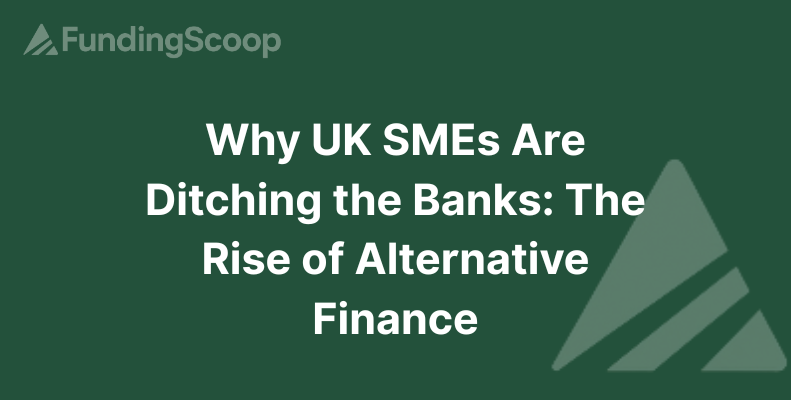
Why UK SMEs Are Ditching the Banks: The Rise of Alternative Finance
Marcus Ashford
TL;DR: UK SMEs are moving beyond traditional banks as alternative lenders offer faster, more flexible funding built for real-time business needs. Powered by open banking data and automated risk tools, new finance providers make decisions in hours, not weeks. Products like invoice, asset-based, and revenue-linked funding adapt to cash-flow changes instead of rigid collateral rules. With government recognition and growing market maturity, 2025 marks a clear shift toward a digital, data-driven funding ecosystem where banks are no longer the only option on the table.
For years, the default answer to a funding gap was simple: call the bank.
Today, that reflex is fading fast. Across the UK, small and mid-sized businesses are quietly breaking up with their traditional lenders — and finding faster, more flexible capital elsewhere.
The Post-Bank Reality
The numbers tell the story. According to the British Business Bank’s Small Business Finance Markets Report 2025, fewer smaller businesses are using external finance, though the value of finance edged up in 2024.
And while banks continue to lend, they’re competing against a growing set of alternative providers: “challenger and specialist banks continue to outperform the bigger traditional banks, increasing their share of lending to smaller businesses in 2024.” (British Business Bank)
In other words: the bank is still in the picture — but it’s no longer the only, or even always the best, option.
Speed Is the New Currency
Timing kills more deals than bad ideas. In sectors where opportunities appear and vanish within days — a new contract, a bulk order, a small acquisition — waiting six weeks for a bank to “review internally” just doesn’t work.
Alternative lenders have built their business model around this pain point.
They use open banking data, real-time accounting integrations, and automated risk tools to make lending decisions in hours rather than weeks.
Flexibility Over Formality
Banks love predictability. SMEs live in the real world.
That clash — between fixed policy and entrepreneurial reality — is where alternative finance thrives.
Invoice finance, asset-based lending, and revenue-based funding all share one common trait: they flex with your business.
Turnover up? Your facility scales. Seasonal dip? Payments adjust.
The British Business Bank’s 2024 report found that “the smaller business lending landscape has changed substantially over the last decade with a greater range of debt finance providers than ever before.”
Data Has Changed the Game
Historically, banks relied on collateral and credit history. Alternative finance relies on data.
By connecting to cloud accounting software, payment platforms, and bank feeds, lenders can assess a business’s trading health far better than any static credit file ever could.
In effect: the decision is based on what’s happening now, not what happened two years ago.
The Human Element: Partnership, Not Permission
One of the quiet frustrations of traditional lending is the power imbalance — feeling like you’re asking permission.
Alternative finance often flips that dynamic. The new generation of lenders act more like partners: transparent pricing, sector-smart relationship managers, and a willingness to take calculated risks when they understand your story.
For many founders, that difference in tone is as valuable as the funding itself.
A Market Growing Up
Five years ago, “alternative finance” sounded like a fringe label. Today, it’s mainstream.
According to the British Business Bank’s 2024 report, the UK economy has weathered several shocks — but “finance providers together with government support have helped smaller businesses.”
Government policy now reflects that shift too: the Department for Business & Trade’s Call for Evidence on SME Access to Finance explicitly recognises non-bank finance as integral to future SME growth.
Meanwhile, data from the Bank of England shows that UK businesses continue to raise increasing volumes of finance from outside traditional banking channels.
The Bottom Line
UK SMEs aren’t abandoning banks out of rebellion. They’re adapting to a funding landscape that finally mirrors their own pace — agile, digital, and growth-focused.
The bank will always have a seat at the table. But in 2025, it’s no longer the only seat that matters.


